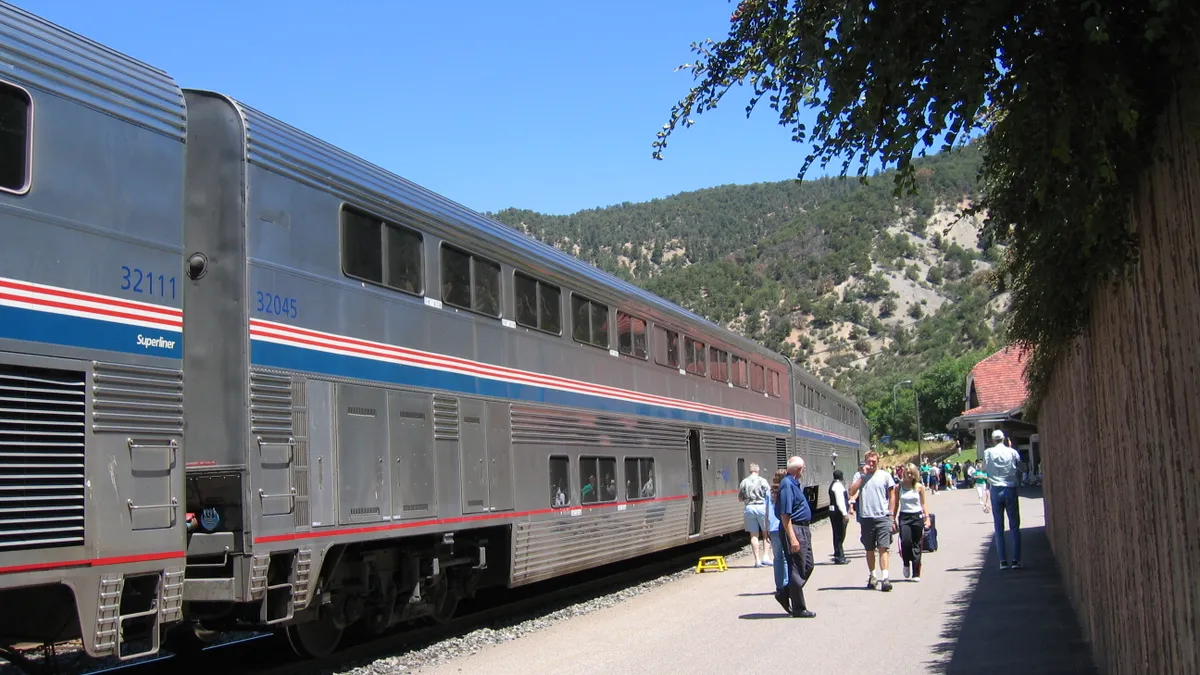More routes, more frequent trains, better serving disadvantaged communities and improving connections with other transportation modes were some common priorities for long-distance rail across six geographic regions, according to a report the Federal Railroad Administration released Thursday. The report summarized a series of meetings FRA held around the country to review Amtrak’s long-distance train service and gauge how communities can work with the passenger railroad “to improve use of intercity passenger rail service along long-distance routes.”
The meetings, held in Chicago; Denver; Jackson, Mississippi; and Washington, D.C., focused on the Northeast, Southeast, Midwest, Central, Northwest and Southwest. Attendees included representatives from state and city transportation departments, regional government and metropolitan planning organizations, local officials, freight railroads and nongovernmental organizations.
Amtrak operates 15 long-distance trains, which it defines as those on routes over 750 miles. These trains serve nearly half the railroad’s more than 500 train stations — many in communities without intercity air or bus service — and carried 3.5 million passengers in 2022.
The FRA’s summary of the meetings described the priorities for each region.
- Northeast: Discussions centered on routes serving higher-than-average disadvantaged populations, outreach to unsupported communities, more east-west service, increased train frequency and the possibility of international service to Canada.
- Southeast: The working group looked at how to attract new riders, reestablish discontinued service, provide rail service along the I-20 corridor, add east-west routes, address delays on existing service and connect riders to national parks. The group also discussed tourism and connectivity with ride-hailing services and other first- and last-mile solutions.
- Midwest: Talks included increasing the frequency of service on existing routes, resuming service on two discontinued routes and expanding service from Chicago to Kansas City and beyond. The group also looked into the number of large and small communities that a route would connect with.
- Central: Concerns for this group included communities that do not currently have intercity rail or other long-distance transportation and the number of rural, small and large communities a route would serve. The group also favored twice-daily trips on all long-distance routes, more north-south connections and better connections to universities, military bases and other activity centers.
- Northwest: Service to rural areas was also a concern for this group, along with routes serving areas with higher-than-average disadvantaged populations. Economic development around stations was also discussed.
- Southwest: Discussions included promoting the climate benefits of rail travel, advertising Amtrak to major destinations and events and how to improve station sites and connections.
The next series of meetings, scheduled to take place this summer, will focus on a shortlist of possible new routes, followed by meetings in the fall to review the highest-priority routes. A fourth round of meetings will look at recommended actions.












